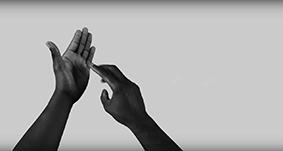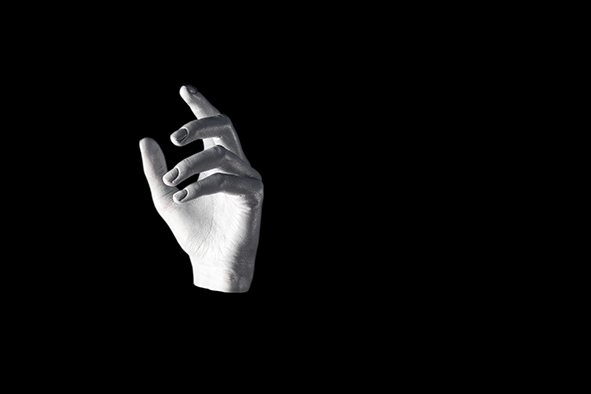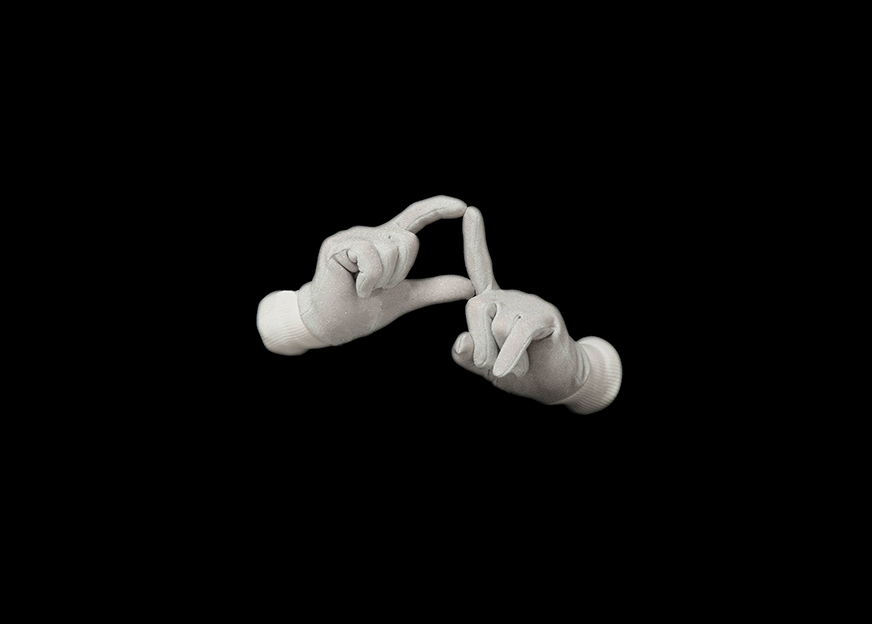Teller 1: They are throwing stones again. The siren pulses through the streets, bouncing off the buildings almost as loudly as the glassy meteorites that cannot be cut or drilled by any material other than their own.
Teller 2: A long time ago there was a boy who could fly but one day his wings broke and he fell a great distance. A great distance. He was not very heavy and he did not have any additional propulsion, but the great distance did not spare him and he fell into the fatal element. Other words for this type of fall from one state to another are drop, tumble, careen, crash, plummet, plunge. This was before the time of lenses but others witnessed and recorded the event that they displayed to the people as images in public buildings and distributed from hand to hand as a warning.
Teller 3: During the Late Jurassic, there was an archipelago at the edge of a small sea. A lagoon surrounded the islands, gradually drowning the land in stagnant water. Salinity rose so high that the resulting brine could not support life. Anything that fell, drifted, or was washed into the lagoon escaped the turbulent ocean currents that would have torn it apart but met its death in the soft sticky silt. Silt has a floury feel when dry and a slippery feel when wet. It has a sparkly appearance and can be felt by the tongue as granular when rubbed against the front teeth.
Teller 1: Some say that throwing stones is a metaphor of resistance but often hurling stones is borne of boredom, mimicry, boastfulness and competition. Most often the throwing of stones is used as a punishment and in multiple numbers. Many against one. In a war between stone and skin, stone wins every time.
Teller 2: The interpretation of the event differed greatly from individual to individual. Some say that the boy’s wings were bound together with wax and that as the boy flew higher, overcome with giddiness, the sun melted the wax. He kept flapping his wings until he had no feathers left and was only flapping his bare arms.
Teller 3: The stones quarried from this cavity were called plattenkalk. They preserved a rare assemblage of fossilized delicate creatures, including the wings of dragonflies, the imprints of stray feathers, large brittle stars and whole jellyfish. The fossils were not numerous but some of them were spectacular.
Teller 1: The sound of small stones called pebbles tumbling over one another in the yearn of the tide does not have its own word. Skittering or scattering are similar. Skittering shingle. Scattering stones.
Teller 2: Some say that the boy did not fall a great distance at all and that this is a mistranslation. The boy was on a great ship and fell overboard. It was not far and he did not have time to spread his wings. In the fatal element the feathers dragged him down.
Teller 3: The most familiar fossils of the plattenkalk include the early feathered dinosaur Archaeopteryx or ‘old wing’, preserved in such detail that they were among the most famous and most beautiful fossils in the world.
Teller 1: The stones are from an ancient time on the Earth, when the oceans were very young. This was called the primordial soup. Over millions of years, trillions of sea creatures, crustaceans and molluscs dug burrows in the muddy ocean bed. When the creatures died, their bodies decomposed into a gelatinous material that filled the cavities in the sediment. The jelly solidified and became known as flint. Flint nodules are casts of negative spaces; trace fossils. Giant flint relics with hollow centres are called paramoudra and are often found in teetering columns resembling a crumbling backbone. They are the only evidence we have of an organism otherwise unknown.
Teller 2: The father of the boy who could fly created buildings, structures and sculptures using stone from the earth. He was known as a master mason. He shaped rough pieces of rock into ashlars and slabs with accurate geometrical shapes, at times simple, but some of considerable complexity, and then arranged the resulting stones to form monuments and edifice.
Teller 3: The plattenkalk were shaped into large flat stones to use as surfaces for mark-making in a process called lithography, meaning ‘stone writing’. The affinity of oil for oil and the repulsion of oil and water made this possible. Any kind of greasy material could be used to draw, write or paint an image on the stone. The whorls of fingerprints could be preserved perfectly in ink.
Teller 1: Inside the nodule, flint is usually dark grey, black, green, white or brown in colour, with a glassy or waxy appearance. A thin layer on the outside of the nodule is usually different in colour, typically white and rough in texture.
Teller 2: Stonemasonry is one of the oldest trades in human history.
Teller 3: To clean the surface of the stone, the slab was wetted all over and sprinkled with coarse sand. Another limestone slab of similar size was placed on top and moved in a figure-of-eight motion for many hours to erase the drawing of an earlier hand. It was hard work. The sand, water and limestone particles emulsified into a thick paste. Pushing the stone required strength and patience.
Teller 1: The sound is deafening. I am worn down by it.
Teller 2: A king asked the mason to build a home for a monster. Using his chisels, mallets, hammers and edges, the stone mason spent many years quarrying and constructing an underground burrow with numberless winding passages and turns that opened into one another, seeming to have neither beginning nor end. This place was called a labyrinth. The origin of this cult word has been lost in time but symbols from a Neolithic age depict the gods of sky and storm carrying a double-edged axe called a labrys.
Teller 3: A single lithographic limestone could last for hundreds of years, and produce thousands of images in its lifetime, but it would not last forever. Every time a stone was re-grained another couple of millimetres would be eroded away, until the stone could no longer withstand the pressure of the printing press and would crack. Sometimes a printer would attach a support to a thinning stone, to prolong its life.
Teller 1: Meteorite falls, also called observed falls, are meteorites collected after their fall from space was observed by people or automated devices. All other meteorites are called ‘finds’. Consulting the database of the Meteoritical Bulletin reveals an average of six falls per year for the last 3,000 years.
Teller 2: The monster roamed his labyrinth until he died in there. The labyrinth was lost too, its cavities filling with water and decay. Salt crusts forming. Crystals growing into stars.
Teller 3: The act of creation was destructive. Images had to be destroyed to make new ones. If we could record the stone in layers of time, we could assemble its history. But we can never put it back together again, never see all of the skins together in one place. The images are not traceable back to their original stone. They exist alone and cannot be fully understood.
Teller 1: Many meteorites fall in showers of many stones, but when they are collected long after the event it is difficult to tell which ones were part of the same fall.
Teller 2: The boy fell from the terrible blue of the swallowing sky. The light was vacant, the splash private. He was gone. Figureless now, only an image remains in the mind. Untied from time and place, the trees are petrified on the shore, the glassy sea reflecting nothing, revealing nothing but its epic isolation. There is nothing to see here; nothing has happened.
Teller 3: It was the stone versus the people and in this case, the people won.
Teller 1: The meteorites help us to understand where we have come from. They are the way we derive the age of our solar system and the creation of life. They are the most ancient accessible material we have to study, from around 4.5 billion years ago. The surface of a meteorite is covered with a fusion crust less than a millimetre thick, revealing its passage from space into atmosphere.
Teller 2: Underneath the water the boy sank down, down, down. Around him startled shoals split apart, scattering fishes before reorganising into one compact body. Some say that the boy became a fish himself and was able to breathe water. Others say that he was eaten by a huge and terrible creature with many suckered arms, which were called tentacles. Either way his body became something else in time. Maybe part of all of us.
Teller 3: Images from the stones were printed onto paper and distributed all over Earth. In later times, machines scanned and stored the images in binary code, a series of zeros and ones that symbolised an idea of creation out of nothing. Positives and negatives. Satellite and mobile networks transmitted images beyond the Earth and out into space.
Teller 1: There are over 100 known lunar meteorite finds, but none has ever been observed to fall.
Teller 2: We are surrounded by the dead.
Teller 3: Despite only existing in the digital ether, this code also had weight, determined by the number of ones in a bit string. This also meant that the code could fall from one state to another.
Teller 1: They are a stone’s throw away.



